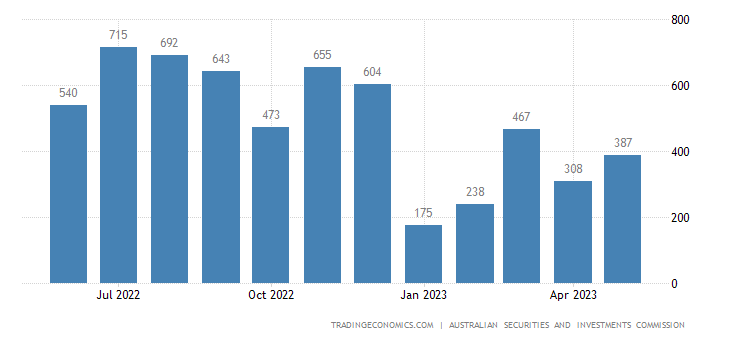Australia’s sugar industry could soar to new heights after a scientific breakthrough brings the industry’s biofuel dream closer.
But growers are calling on the Australian government to speed up policy to ensure momentum is not lost as the industry faces major upheavals after three mill closures in four years.
Mossman mill, in Far North Queensland, is the latest to shut its doors after 130 years of operation following the closure of the state’s Maryborough and Bingera mills in 2020.
Versatile crop
Sugar cane was brought to Australia on the first fleet in 1788, and until now it has been grown to produce raw sugar.
But the crop is incredibly versatile and can be used to make biofuels, bioplastics, perfume, and even sustainable fabrics.
Now, a research breakthrough could offer the diversification the industry needs.
Scientists have gone right into the crop’s DNA and have mapped the genome of sugar cane, meaning they’ve managed to find the entire set of DNA instructions in a cell.
Professor of innovation agriculture at the University of Queensland (UQ) Robert Henry co-authored the report.
“We’re continually trying to breed sugar with higher yields and higher sugar content, resistance to pests and diseases,” Professor Henry said.
Now they can do that because they know the genes that produce these qualities.
While it sounds arbitrary, it gives growers a tool to produce better sugar cane and sugar cane that can be grown for uses other than raw sugar.
Alternative to fossil fuels
Principal investigator and CSIRO research scientist Karen Aitken spearheaded the research, securing funding through the US Department of Energy by proving that research communities around the world would benefit from accessing the genome sequence.
Sugar cane is the last of the world’s 20 major crops to have the genome mapping done.
It took more than a decade to finish the work because its genome is complicated — three times the size of the human genome — and now the research has been made publicly available.
“That will help generate better varieties for whatever the growers want to use those varieties for,” Dr Aitken said.
Australia’s industry is already starting on the back foot; Brazil is the largest sugar producer in the world and a large portion of their crop is used to produce ethanol to fuel the nation’s vehicles.
When growers choose the varieties of sugar cane to plant, an important quality is how much sugar the plant can yield; however, when growing for biofuel production they need a crop that produces a large biomass, which is the organic material of the plant that can be turned into fuel.
Dr Aitken said being able to produce a large amount of biomass meant there was potential to fast track the biofuel industry in Australia.
“Sugar cane biomass means that we are all contributing to a greener planet,” she said.
“I think that that will benefit everybody.”
Being able to manufacture these products, especially biofuel, could significantly contribute to achieving Australia’s net zero emissions by 2050.
“We need another alternative, renewable source of carbon, and sugar cane probably is the most promising example,” Professor Henry said.
He said the speed the technology takes to get off the ground depends on how serious Australia is at reaching climate targets, but he hoped there would be significant commercial adoption by 2030.
Industry interest
Alternative uses for sugar cane are not new for the cane industry; it has been laying the groundwork for decades.
But it’s been a slow process to build an industry from the ground up.
Queensland Canegrowers chief executive Dan Galligan said they have been making their own policies and investigating market potential for it.
With both federal and state governments adopting emissions reduction targets, Mr Galligan wants them to prioritise getting this green industry off the ground.
In Mackay in north Queensland, a pilot plant was built in 2021 to convert sugar cane waste products into different products including aviation fuel.
Last year the Queensland government committed more funding to expand the project.
And there is demand for these products. Aviation lobby group Airlines for Australia and New Zealand has developed a road map for the industry to reach net zero by 2050.
It encompasses improving efficiencies, carbon offsetting, and using sustainable fuel from products like sugar cane.
But now Mr Galligan said they needed the federal government to implement policies to ensure biofuel was manufactured in Australia.
“All airlines have now committed in some form or another to using sustainable aviation fuel,” Mr Galligan said.
“But the production ramp-up that’s required to do that is huge.”
Australia’s sugar industry is at a crunch point and being able to diversify the product could breathe life into one of Australia’s oldest industries.
Mr Galligan said it was time for investment.
“That’s exactly how every other bioenergy and biofuels industry in the world has existed,” Mr Galligan said.
“They’ve all existed on the back of effective policies by governments to encourage that investment.”
A spokesperson for the Department of Climate Change, Energy, the Environment and Water said the Australian government was committed to supporting the biofuel industry in Australia.
“The government is developing a fuel quality standard to enable the supply of renewable diesel in Australia,” they said.
A total of $30 million has been made available for grants under the Sustainable Aviation Fuel Funding Initiative.
Public consultation is also open on the electricity and energy sector plan that includes growing renewable fuels like the sugarcane industry.
Then put it in your mouth? – Mick Raven
Consumers looking for plant-based options to dairy milk have an abundance of choice available from oat, almond, soy and rice to even macadamia milk.
But a product geared to taste almost exactly like dairy milk that would be shelf-stable for up to three years could soon hit the market.
It’s milk made from sugar cane, and scientists say the proteins in it are similar to animal proteins.
So, what is it?
University of Queensland professor of food microbiology Mark Turner explained that the sugar from cane, molasses, and other by-products would be consumed by yeast, which would in turn produce a protein bioidentical to dairy milk.
Professor Turner said many startup companies in Australia and overseas were competing in this area.
And while the research is continuing, he’s confident it’s now at the critical stage where it could be successful.
Is it good for you?
Professor Turner said the product would provide an excellent source of protein due to its similarity to animal proteins, including cow milk or eggs.
He said while it would depend on the other ingredients included in the milk, the protein produced by the precision fermentation could be incorporated into various foods to boost their protein content.
Whether milk made from sugar cane would have similar health benefits compared to other plant-based milk, Professor Turner said it would depend on the final formulation.
Cow protein, or casein, is a high-quality protein that contains all essential amino acids and is highly bioavailable.
Who will make it?
The product is set to be manufactured through a world-leading Future Foods BioHub in Mackay in collaboration with the Queensland government and Asia-Pacific fermentation company Cauldron.
The state government has stumped up $528,000 to get the project off the ground, and Cauldron was waiting on regulatory approvals to proceed.
Cauldron chief executive Michele Stansfield said canegrowers and scientists were bringing their expertise to the table to develop the new product.
“We’re not looking to replace the food chain, we’re just looking to complement or supplement it into the future,” Ms Stansfield said.
She said they were creating an alternative value stream for the sugar industry.
“Protein costs a lot more than sugar,” she said.
“We’re hoping it will take some of the fluctuations out of [sugar] pricing and it will ensure the continued use of sugar going forward in a volatile nutritional market.
“We don’t want to be stealing from an industry. We want to be adding to an industry.”
Will it grow farmers’ wallets?
Mackay Sugar chief executive Jannik Olejas said the project would likely see a reduction in sugar exports, but he was confident the industry would see an economic boost and crop growth.
“Any good businessman would say it’s great to have the opportunity either to sell to your next-door neighbour or to export, whatever pays the best,” Mr Olejas said.
He said selling products in Australia rather than exporting would reduce international transport costs for growers.
President of Canegrowers Mackay Kevin Borg said the cane industry was in the box seat for this new technology and he saw a strong appetite from consumers.
“In the past, there’s been no government support in place, but today, we’ve got a government that’s hell-bent on introducing these projects,” he said.
“But, if we can afford to just put it over the fence into a plant that’s producing protein, I think there’s a premium that needs to be paid.
“I’ll supply the cane. They can work the science out.”
A spokesperson for dairy advocate eastAUSmilk said the organisation had spoken to representatives and all parties agreed further discussion would be beneficial.
Ms Stansfield said international milk companies were investing in new technologies to shore up their supply chain.




































































More links to this Article – Mick Raven
The Cow-less Path – ConspiracyOz
Sugar cane milk may offer same protein, taste as dairy – Future Alternative
‘Game-changing’ sugar cane milk is on the horizon
Plant milks or dairy What’s better for you and planet Earth CNN
Moo-ve Over Milk: Alternative Dairy Industry Continues to Cream the Competition
LikeLike